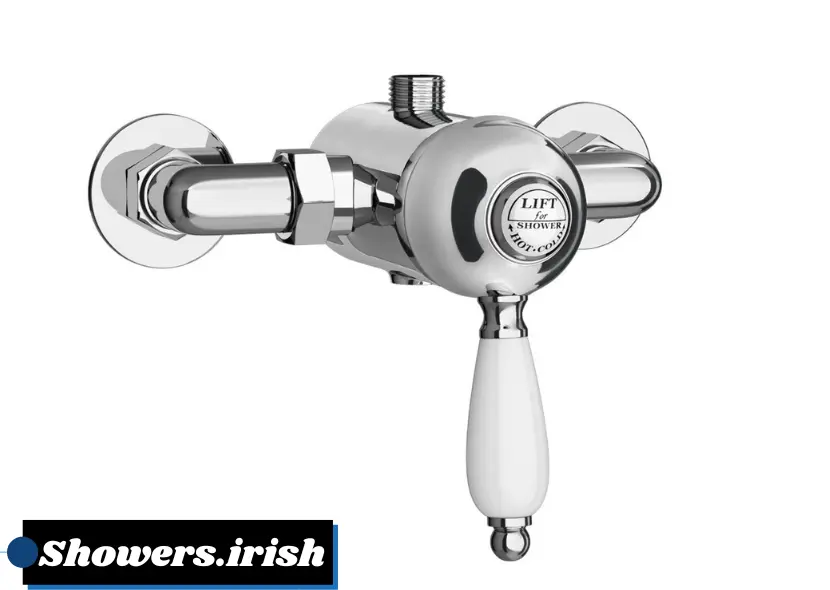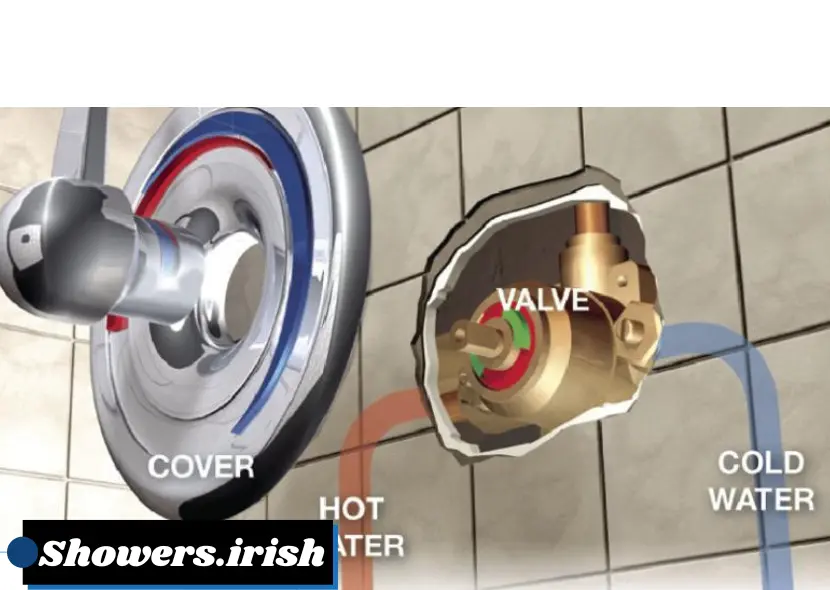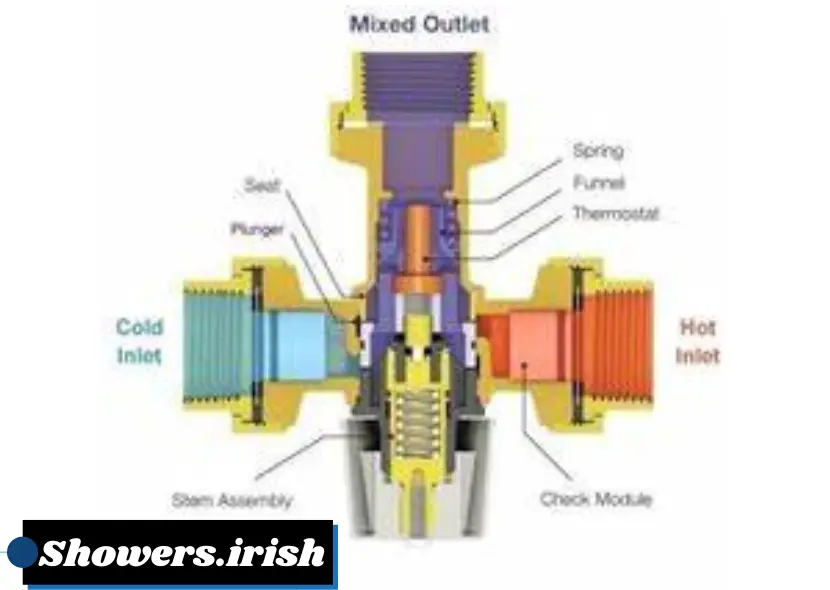A shower mixing valve is a crucial component in modern plumbing systems, ensuring that you get a comfortable and consistent water temperature during your showers. This article explores the mechanics of shower mixing valves, their types, installation, troubleshooting, and maintenance. By the end, you’ll have a comprehensive understanding of how these valves work and how to manage them effectively.
What is a Shower Mixing Valve?

Purpose and Function
A shower mixing valve controls the blend of hot and cold water in your shower, allowing you to set a desired temperature. It works by mixing water from both sources—hot and cold—before it reaches the showerhead. This ensures a stable temperature throughout your shower, preventing sudden temperature changes that can be both uncomfortable and potentially dangerous.
Types of Shower Mixing Valves
Shower mixing valves come in various types, each with unique features and benefits. Understanding these can help you choose the right one for your needs.
Manual Mixing Valves
Manual mixing valves require the user to adjust the temperature manually by turning knobs or levers. These valves typically have separate controls for hot and cold water, allowing you to find the right balance.
Thermostatic Mixing Valves
Thermostatic mixing valves (TMVs) are more advanced and offer greater precision. They automatically adjust the mix of hot and cold water to maintain a consistent temperature, even if the water supply fluctuates. This type of valve is especially useful in households with varying water pressures or in settings where safety is a concern.
Pressure-Balancing Valves
Pressure-balancing valves maintain a consistent water temperature by adjusting the flow of hot and cold water based on pressure changes. They are designed to prevent sudden temperature fluctuations caused by changes in water pressure from other fixtures in the home.
How Does a Shower Mixing Valve Work?

Basic Operation Principles
At its core, a shower mixing valve operates by regulating the flow of hot and cold water to achieve the desired temperature. When you adjust the temperature control, the valve changes the ratio of hot to cold water. Here’s a simplified view of the process:
- Water Entry: Hot and cold water enter the valve from separate pipes.
- Mixing Chamber: Inside the valve, water flows into a mixing chamber where it combines.
- Temperature Adjustment: The valve mechanism adjusts the flow rates of hot and cold water based on user input or temperature settings.
- Output: The mixed water is then directed to the showerhead.
Components of a Shower Mixing Valve
Understanding the key components of a shower mixing valve can help in diagnosing issues and performing maintenance.
Control Mechanism
The control mechanism, whether manual, thermostatic, or pressure-balancing, regulates how hot and cold water are mixed. In manual valves, this is typically a set of handles or levers. In thermostatic valves, it’s a temperature dial or digital control.
Mixing Chamber
The mixing chamber is where the hot and cold water meet and blend. Its design affects how effectively the valve mixes water and maintains temperature consistency.
Flow Regulators
Flow regulators control the rate at which water flows through the valve. They help in maintaining a steady water pressure and prevent excessive water use.
Installation and Maintenance

Installing a Shower Mixing Valve
Proper installation is crucial for the valve to function effectively. Here’s a general overview of the installation process:
- Preparation: Shut off the water supply and remove the old valve if replacing one.
- Placement: Position the new valve in the wall cavity, ensuring it’s securely anchored.
- Connection: Connect the hot and cold water supply lines to the valve’s inlets.
- Testing: Turn the water supply back on and check for leaks. Adjust the temperature settings to ensure proper mixing.
Maintaining Your Shower Mixing Valve
Regular maintenance ensures the longevity and efficient operation of your shower mixing valve. Here are some tips:
Cleaning
Over time, mineral deposits and sediment can build up in the valve, affecting its performance. Regularly clean the valve components to prevent clogs and ensure smooth operation.
Checking for Leaks
Inspect the valve and surrounding pipes periodically for any signs of leaks. Addressing leaks promptly can prevent water damage and reduce your water bill.
Replacing Parts
If the valve starts to malfunction, it may be due to worn-out components. Common parts that may need replacement include the cartridge or seals. Consult the manufacturer’s instructions for guidance on part replacement.
Troubleshooting Common Issues

Temperature Fluctuations
If you experience sudden temperature changes during your shower, it could be due to a faulty mixing valve or pressure imbalances. Check the valve settings and consider installing a pressure-balancing valve if the problem persists.
Low Water Pressure
Low water pressure can affect the performance of a mixing valve. Ensure that the valve is not clogged with sediment and check the water supply lines for any obstructions.
Leaking
Leaks from the valve can result from worn seals or improper installation. Tighten connections and replace any damaged parts as needed to resolve the issue.
Conclusion
A shower mixing valve plays a vital role in ensuring a comfortable and consistent shower experience. By understanding how these valves work, their types, and how to maintain and troubleshoot them, you can ensure that your showers are always enjoyable and free from unexpected issues.
For further reading, consider exploring topics such as advanced water conservation techniques, the benefits of upgrading to modern shower systems, or DIY plumbing tips to enhance your home’s efficiency.
Feel free to share your experiences with shower mixing valves or ask questions about specific issues you’ve encountered. Engaging with the material can provide deeper insights and practical solutions for your plumbing needs.
Frequently Asked Questions (FAQs)
1. What is a shower mixing valve and why is it important?
A shower mixing valve controls the blend of hot and cold water in your shower to maintain a consistent temperature. It prevents sudden temperature changes, providing a comfortable and safe shower experience.
2. How do I know if my shower mixing valve needs repair or replacement?
Common signs that your valve may need attention include inconsistent water temperature, low water pressure, or visible leaks. If you experience these issues, it may be time to inspect or replace the valve.
3. What are the different types of shower mixing valves?
The main types are manual mixing valves, thermostatic mixing valves (TMVs), and pressure-balancing valves. Manual valves require manual adjustment, TMVs automatically regulate temperature, and pressure-balancing valves maintain consistent temperature despite pressure changes.
4. How can I maintain my shower mixing valve to ensure it works properly?
Regular maintenance includes cleaning the valve to remove sediment, checking for leaks, and replacing worn-out parts such as cartridges or seals. Routine inspections can help prevent issues and extend the valve’s lifespan.
5. Can I install a shower mixing valve myself or should I hire a professional?
While some DIY enthusiasts may be able to install a valve, it’s often recommended to hire a professional plumber to ensure proper installation and avoid potential issues. Proper installation is crucial for the valve’s performance and durability.
If you’re interested in learning more about how shower mixing valves work and how they can enhance your shower experience, check out this detailed guide on how mixer showers work. The post provides valuable insights into the functionality of mixer showers, which use mixing valves to combine hot and cold water for optimal temperature control.
It covers various types of mixer showers, their benefits, and tips for maintaining them. Understanding these components can help you make informed decisions about upgrading your shower system or addressing any issues with your current setup. For a deeper dive into the mechanics and advantages of mixer showers, visit the link and discover how you can achieve a more comfortable and enjoyable shower experience.
Credit Website: www.ireland.ie/
